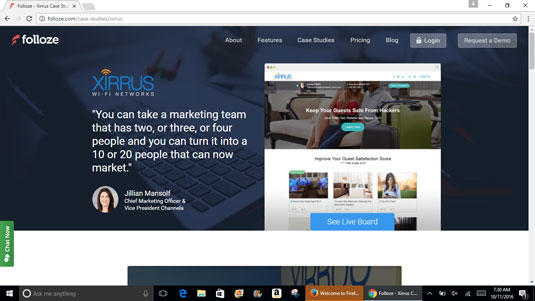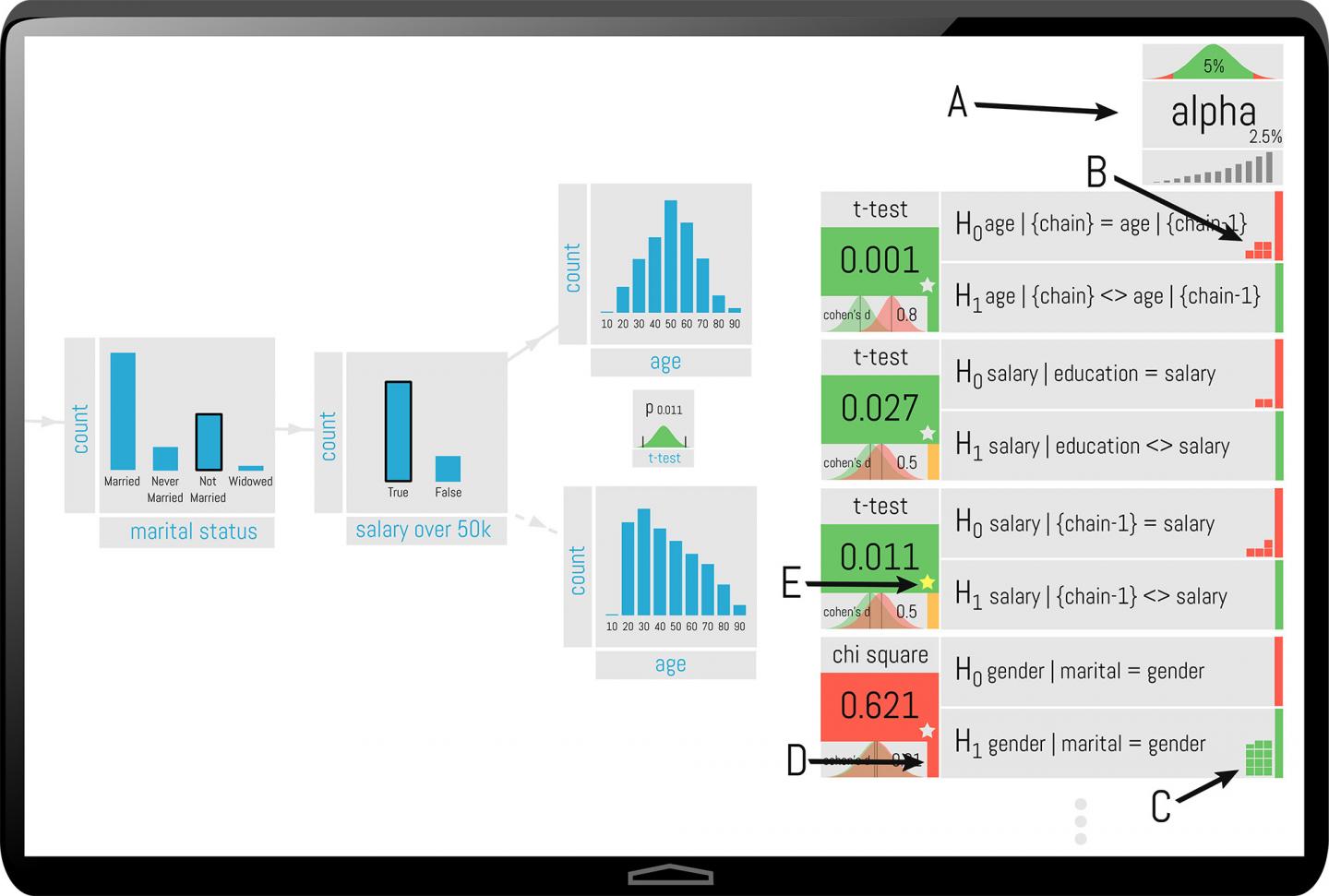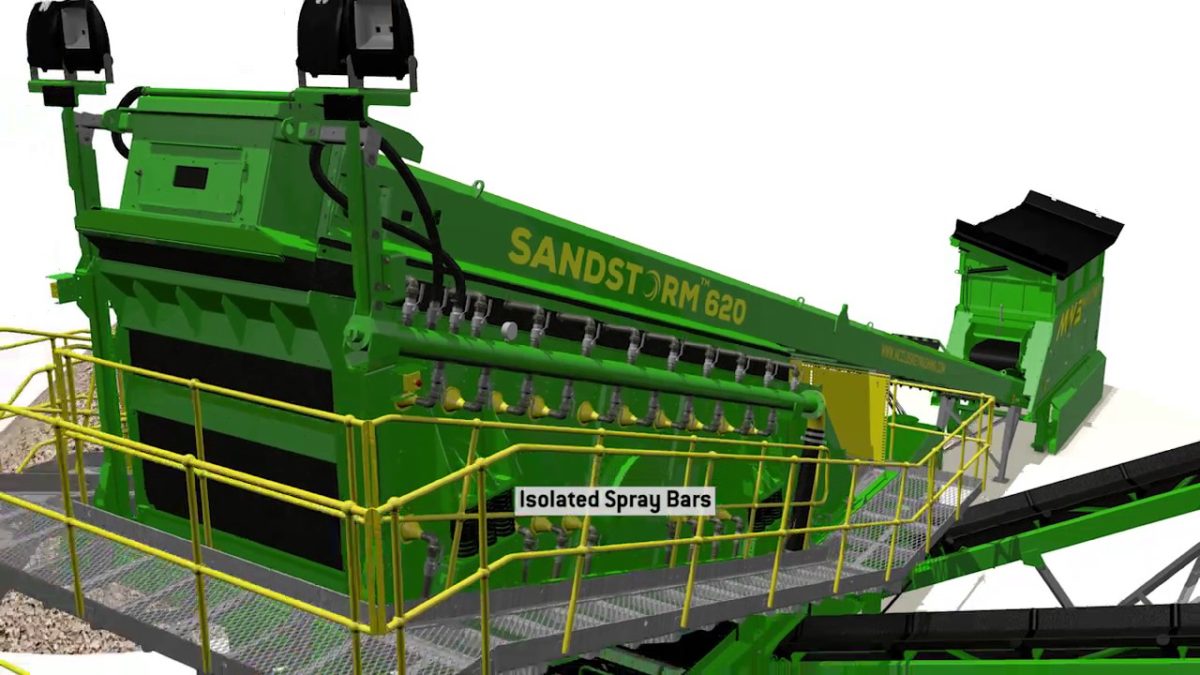
Through early stages of the development process, the driver remained in the truck cab but was hands free during the driving.
AUTONOMOUS VEHICLES ON THE LOAD/HAUL ROUTE
Posted March 20, 2017 | By Therese Dunphy
Two US companies – an aggregate operation and a robotics group – have been developing an aftermarket technology solution that could soon take the driver out of the haul truck. Therese Dunphy reports.
It’s no secret that equipment manufacturers have been working on autonomous trucks for many years. Typically, these large trucks operate as part of a fleet management and optimisation program at large mines. While intriguing, the technology has not yet been scaled for use in aggregates applications.
Now, Luck Stone, based in Richmond, Virginia, USA, with quarrying operations across three states, and Jaybridge Robotics, based in Cambridge, Massachusetts, have collaborated on a system that fits the unique needs of the quarrying market. This year they expect to have the prototype unit of a lead driver concept in place. This would allow a fleet of autonomous haul trucks to follow a single operator-driven truck throughout the load/haul/dump/return route. Eventually, they expect to see the driver out of the truck altogether.
Exploring options
Luck Stone has been on a roll with innovations over the past several years, including pioneering a remote control wheel loader that enhances safe operations at the quarry face and gives it access to a greater amount of reserves.
“As a business, we’re trying to make strides around the idea of being really intentional about innovation and creativity,” Luck Stone’s senior director of engineering and operational support Travis Chewning said.
“In fact, the company created an innovation process to develop ideas. We have a process, forum, and resources available so that when folks in the organisation have an idea, there is a place for them to go.”
When Luck Stone put a remote control loader into its first operation, Chewning said the company began to think about other opportunities.
“We were amazed at how quickly we were able to move and the success of that project. It got us asking, if we could remotely control a 988 loader, could we automate the loader? Could we take the next step? We didn’t have the ability to take that anywhere, but we were very curious about it.”
At the same time, Jaybridge Robotics was fresh from its success with autonomous agricultural equipment and was exploring other markets where automation made sense – including the aggregates industry.
“The mining industry is familiar with the concept and is starting to become familiar with the benefits,” Jaybridge Robotics president and CEO Jeremy Brown said. “And the equipment price is high, so the cost of autonomy equipment is a relatively small capital cost compared to the trucks.”
Brown met with an aggregates producer at MINExpo 2012 and spent much of 2013 visiting quarries around the United States to learn more about the needs of the market. “We became convinced that the opportunity was real and that the technology had just about gotten to the point where what an aggregates operation needs from an autonomous system was becoming cost-effective,” he said.
By using commodity, off-the-shelf parts, Jaybridge can take advantage of the rapid pace of development in technology and keep the parts cost down.
“Every high-end car now has lidar and radar and all the sensing technology you need,” Chewning said. “There are companies producing those by the hundreds of thousands, so the unit cost is just dropping amazingly fast. Jaybridge really sees an opportunity to leverage that.”
Determining the value proposition
One of the challenges is determining the trade-off between functionality and price. Chewning said Luck Stone was in conversations with Jaybridge for nearly a year, vetting capability and cost issues. They considered the following questions:
- �What kind of functionality would create value?
- What price point would be considered feasible?
- What are the performance requirements?
- What are the safety requirements?
- What equipment factors need to be considered?
“Within Luck Stone, the real motivation is that, when we looked at the future, there is no doubt this is coming.” Chewning said. “If you read any article about where autonomous cars are going, this is going to be part of how the world functions. We’d much rather be on the front end of that than the back end.”
Another consideration came from a lesson Luck Stone learned when it began automating plants in the early 1980s: automation improves consistency.
“We learned that it helps a plant operate in a more consistent process,” Chewning said. “It’s less expensive to operate, and it gives us the best product for the customer.”
Automated truck operations may well lead to lower maintenance costs, as their behaviour is modelled after an operation’s best truck operator, and driving technique impacts transmission shifts, brake wear, suspension life and tyre life, among other factors.
Chewning posed the question: “What would your performance be in an operation if every truck was functioning like your best operator? We definitely see there to be an efficiency gain.”
He said the deeper they went into the conversation, the more opportunities presented themselves.
For example, one discussion focused on night-time operations. Typically, reduced visibility leads operators to lower their speed, and productivity drops. Visibility concerns aren’t an issue for an automated truck, so it creates an opportunity for increased productivity.
While automation is not intended to replace people at Luck Stone operations, it does allow operators to focus on plant maintenance and efficiency.
“Our associates are our most valuable asset,” Chewning said. “We learned that, by automating our plants, we provided time for our operators to do other, more valuable, things.”
Although Luck Stone isn’t looking to downsize its workforce, automated trucks may help offset workforce challenges facing operators around the nation.
“It is progressively harder and harder to find operators,” Brown said. “The workforce across the country is urbanising, so it’s more challenging to get people to drive out of the city to operate quarrying equipment.”
Finding trained and reliable operators is a significant concern for some aggregates companies, he says.
Developing a prototype
Once they defined the various parameters, the two companies began to collaborate on prototypes. Prior to presenting the concept at an AGG1 presentation in 2015, the project had reached the point that a driver could drive the experimental truck from its cab. The driver used a joystick to control the technology installed on the haul truck.
Since then, Luck Stone and Jaybridge Robotics have been able to get the operator’s hands off the wheel, allowing the vehicle to drive autonomously and with repeatable performance along a pre-planned path. The operator was able to ‘land’ the truck accurately at designated locations. “We’ve taken the next step,” Brown said.
Chewning added: “Every time they come down, we incrementally experiment one step further. We’re taking baby steps, really just trying to get experiences under our belt. The steps now are to just keep building on that – building knowledge, experiences and confidence with the system so we can keep stretching it more and more.”
Future steps include working through issues such as having the truck operate at higher speeds and in reverse. Brown said they needed to work through the initial autonomous workflow, as well as user interfaces with the loader, crusher and lead driver.
“We hope to be doing lead driver, in the experimental context, where you still have an operator sitting in each of the autonomous trucks and serving as the safety system, keeping eyes on the road, eyes on the mirrors, and working out the workflow elements,” Brown said.Additional factors, such as integration of obstacle detection, will be necessary before taking the operator out of the cab.
Brown says they have to work through scenarios in which the truck must detect obstacles and ensure the sensors do so accurately.
“You have to put in place all of the safety protocols needed to operate not just self-driving, but actually unpopulated trucks in an area,” he said. “After we’ve been operating for a while, we should be able to characterise how quickly conditions on the ground change and how the lead driver changes the way they are driving.”
As they can identify how quickly those changes happen, they will learn the tempo of the route and gauge how long a driver can safely leave the vehicle.
“It’s going to be a journey of discovery to figure out how to get the driver out of the cab at all, and to figure out how frequently they have to get back in – and once there isn’t a lead driver, who monitors a remote console, so that if the truck sees an obstacle and stops for some reason, it can flag a human operator to address the situation.”
Once the lead driver comes out of the truck, operations will still need a person to work in a supervisory fashion, he says.
“The final step,” Brown said, “would be to give that remote human the ability to command the truck where to go on a map or some kind of computer interface rather than instructing the truck by driving the truck first.”
Looking to the future
To date, Jaybridge Robotics has worked exclusively with Luck Stone on the prototype.
Brown says that will continue until they work through the basic workflow process.
“It’s high cost and low return until it’s actually working,” he said of the development process.
“As soon as the first one is working at one quarry site, we’re going to want to install more at some other sites and make sure we can solve problems at more than one place.”
One of the challenges is to imagine all the variables. “We can only experience so many scenarios in so many months per year,” Chewning said. “The more experiences we have, the more Jaybridge can adapt and grow the system.
“They have been able to move forward so much faster than we would have ever expected. We have no reason to think that in the next year to 18 months we won’t have a prototype running unmanned in one of our quarries. That’s just awesome.”
The lead driver approach will likely be the first saleable model, Brown predicts. Once they have several out in the field, they can grow their experience and address variables from site to site, including how factors such as GPS and cellular coverage impact the system.
While Luck Stone’s involvement has been vital to the early phases of development, Chewning said the partners would welcome other operators to join the project and help to refine the technology. “The more industry engagement there is, the more it helps advance the thinking,” he said.
Article courtesy of Aggregates Manager. Visit: AggMan.com














